Discover 11 hidden attractions, cool sights, and unusual things to do in Agra (India). Don't miss out on these must-see attractions: Taj Mahal, Agra Fort, and Black Taj Mahal. Also, be sure to include Tomb of I'timād-ud-Daulah in your itinerary.
Below, you can find the list of the most amazing places you should visit in Agra (Uttar Pradesh).
Table of Contents
Taj Mahal

Also known as: ताजमहल
Iconic Mughal mausoleum. The Taj Mahal, is an ivory-white marble mausoleum on the right bank of the river Yamuna in the Indian city of Agra. It was commissioned in 1632 by the Mughal emperor Shah Jahan to house the tomb of his favourite wife, Mumtaz Mahal; it also houses the tomb of Shah Jahan himself. The tomb is the centrepiece of a 17-hectare complex, which includes a mosque and a guest house, and is set in formal gardens bounded on three sides by a crenellated wall.
Construction of the mausoleum was essentially completed in 1643, but work continued on other phases of the project for another 10 years. The Taj Mahal complex is believed to have been completed in its entirety in 1653 at a cost estimated at the time to be around ₹32 million, which in 2020 would be approximately ₹70 billion (about U.S. $1 billion). The construction project employed some 20,000 artisans under the guidance of a board of architects led by the court architect to the emperor, Ustad Ahmad Lahauri. Various types of symbolism have been employed in the Taj to reflect natural beauty and divinity.
The Taj Mahal was designated as a UNESCO World Heritage Site in 1983 for being "the jewel of Muslim art in India and one of the universally admired masterpieces of the world's heritage". It is regarded by many as the best example of Mughal architecture and a symbol of India's rich history. The Taj Mahal attracts more than 6 million visitors a year and in 2007, it was declared a winner of the New 7 Wonders of the World (2000–2007) initiative.[1]
Address: Taj Road, Agra
Agra Fort

Also known as: आगरा का किला
Mughal stronghold on ancient site. Agra Fort is a historical fort in the city of Agra in India. It was the main residence of the rulers of Sikarwar clan of rajputs until mughals occupied it and Mughal Dynasty until 1638, when the capital was shifted from Agra to Delhi. It was also known as the “Lal-Qila”, “Fort Rouge” or “Qila-i-Akbari”. Before capture by the British, the last Indian rulers to have occupied it were the Marathas. In 1983, the Agra fort was life inscribed as a UNESCO World Heritage Site. It is about 2.5 km northwest of its more famous sister monument, the Taj Mahal. The fort can be more accurately described as the walled city.
Like the rest of Agra, the history of Agra Fort prior to Mahmud Ghaznavi's invasion is unclear. However, in the 15th century, the Chauhan Rajputs occupied it. Soon after, Agra assumed the status of capital when Sikandar Lodi (A.D. 1487–1517) shifted his capital from Delhi and constructed a few buildings in the pre-existing Fort at Agra. After the first battle of Panipat (A.D. 1526) Mughals captured the fort and ruled from it. In A.D. 1530, Humayun was crowned in it. The Fort got its present appearance during the reign of Akbar (A.D. 1556–1605).[2]
Address: Agra Fort, 282003 Agra
Black Taj Mahal
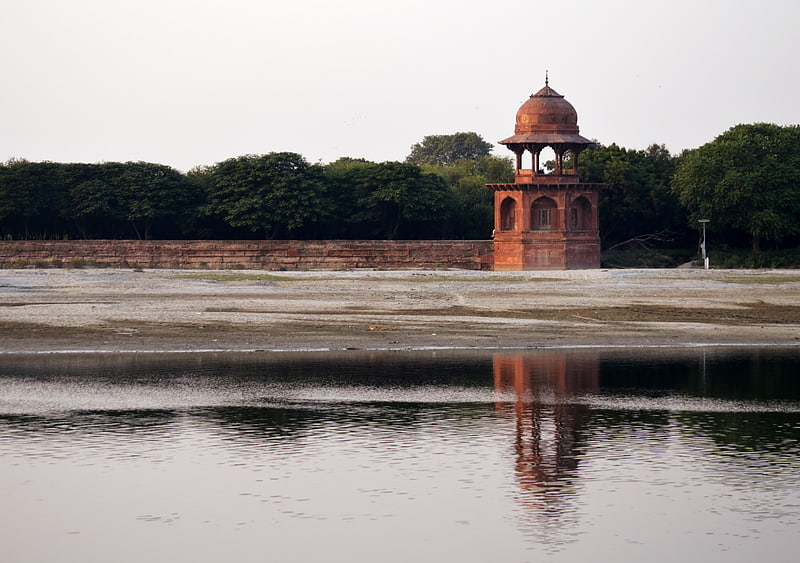
The Black Taj Mahal, also known as the Black Taj, Kaala Taj, or The Second Taj, is a legendary black marble mausoleum that is said to have been planned to be built across the Yamuna River opposite the Taj Mahal in Agra, Uttar Pradesh, India. Mughal emperor Shah Jahan is said to have desired a mausoleum for himself similar to that of the one he had built in memory of his second wife, Mumtaz Mahal.
A French traveller by the name of Jean Baptiste Tavernier who visited Agra in 1665 first mentioned the idea of Black Taj in his fanciful writings. The writings of Tavernier mention that Shah Jahan began to build his own tomb on the other side of the river but could not complete it as he was deposed by his own son Aurangzeb. However, many modern archaeologists believe this story to be myth.[3]
Tomb of I'timād-ud-Daulah
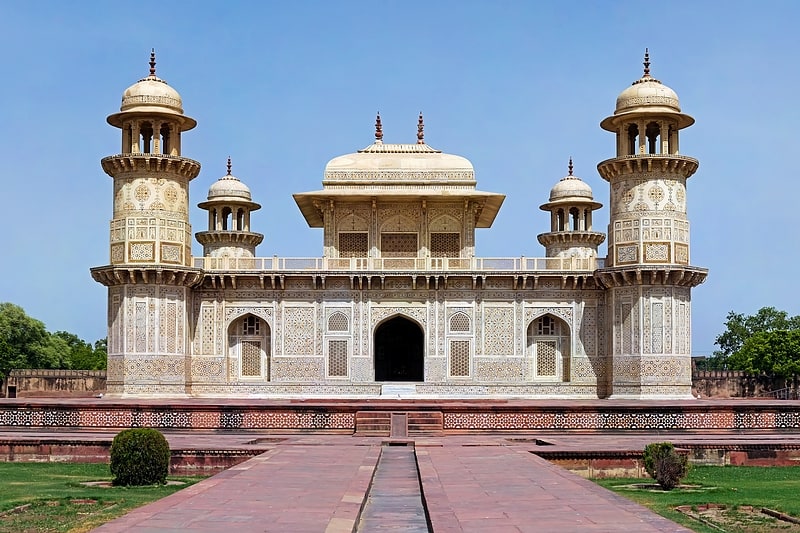
Mughal mausoleum known as the 'Baby Taj'. Tomb of I'timād-ud-Daulah is a Mughal mausoleum in the city of Agra in the Indian state of Uttar Pradesh. Often described as a "jewel box", sometimes called the "Bachcha Taj" or the "Baby Taj", the tomb of I'timād-ud-Daulah is often regarded as a draft of the Taj Mahal.
Along with the main building, the structure consists of numerous outbuildings and gardens. The tomb, built between 1622 and 1628, represents a transition between the first phase of monumental Mughal architecture – primarily built from red sandstone with marble decorations, as in Humayun's Tomb in Delhi and Akbar's tomb in Sikandra – to its second phase, based on white marble and pietra dura inlay, most elegantly realized in the Taj Mahal.
The mausoleum was commissioned by Nur Jahan, the wife of Jahangir, for her father Mirzā Ghiyās Beg, originally a Persian Amir in exile, who had been given the title of I'timād-ud-Daulah (pillar of the state). Mirzā Ghiyās Beg was also the grandfather of Mumtāz Mahāl (originally named Arjumand Banu Begum, daughter of Asaf Khan), the wife of the emperor Shah Jahan, responsible for the construction of the Taj Mahal.[4]
Address: Yamuna River, 282001 Agra
Akbar's tomb
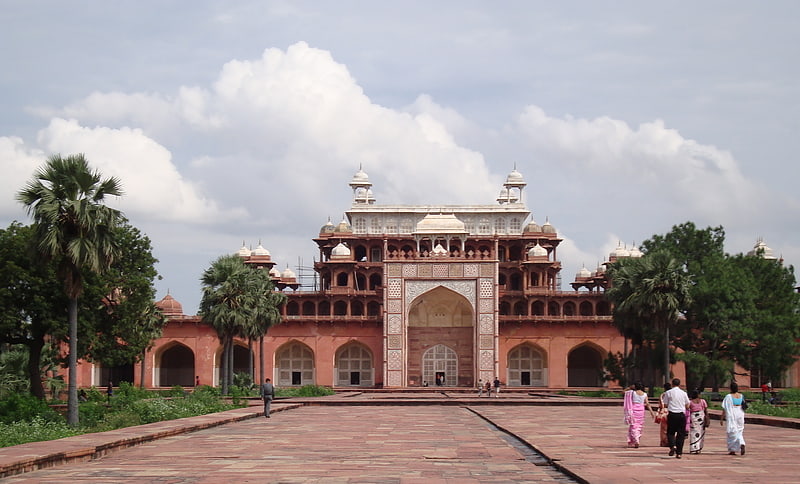
Also known as: सिकंदरा, आगरा
Ornate Mughal tomb and gardens. Akbar's tomb is the tomb of the Mughal emperor Akbar. It was built in 1605–1613 by his son Jahangir and is situated in 119 acres of grounds in Sikandra, a sub of Agra, Uttar Pradesh, India.[5]
Mehtab Bagh
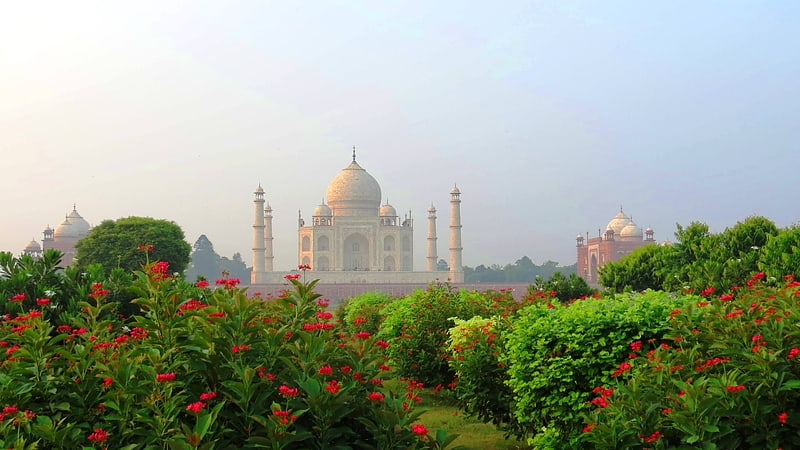
Park in Agra, India. Mehtab Bagh is a charbagh complex in Agra, North India. It lies north of the Taj Mahal complex and the Agra Fort on the opposite side of the Yamuna River, in the flood plains. The garden complex, square in shape, measures about 300 by 300 metres and is perfectly aligned with the Taj Mahal on the opposite bank. During the rainy season, the ground becomes partially flooded.[6]
Address: Near Taj Mahal, 282001 Āgra
Jama Masjid
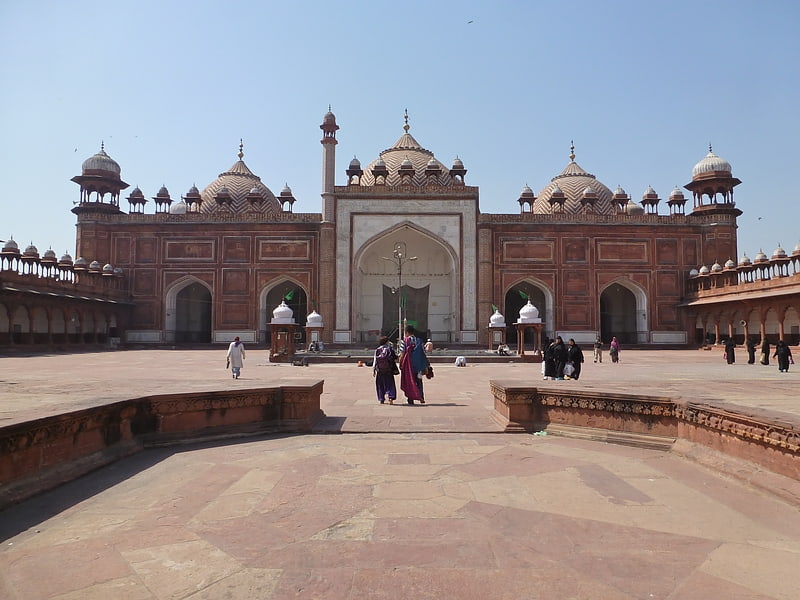
Mosque. The Jama Mosque is a 17th-century congregational mosque located in the historic core of Agra, Uttar Pradesh. It was built by Jahanara Begum, Padshah Begum of the Mughal Empire, during the reign of her father, Mughal Emperor Shah Jahan. It is one of the largest mosques in India. Today it is still in use, serving as the principal mosque for the city of Agra. It stands opposite to the Agra Fort, and overlooks the Agra Fort Railway Station.[7]
Address: Jama Masjid Rd, 282003 Agra
Mina Mosque

Mosque in Agra, India. The Mina Mosque or the Heavenly Mosque was built by Shah Jahan between 1631 and 1640 near Diwan-i-Khas in Agra Fort. This small mosque was built, entirely of white marble, by the Mughal king Shah Jahan for his personal use.[8]
Musamman Burj
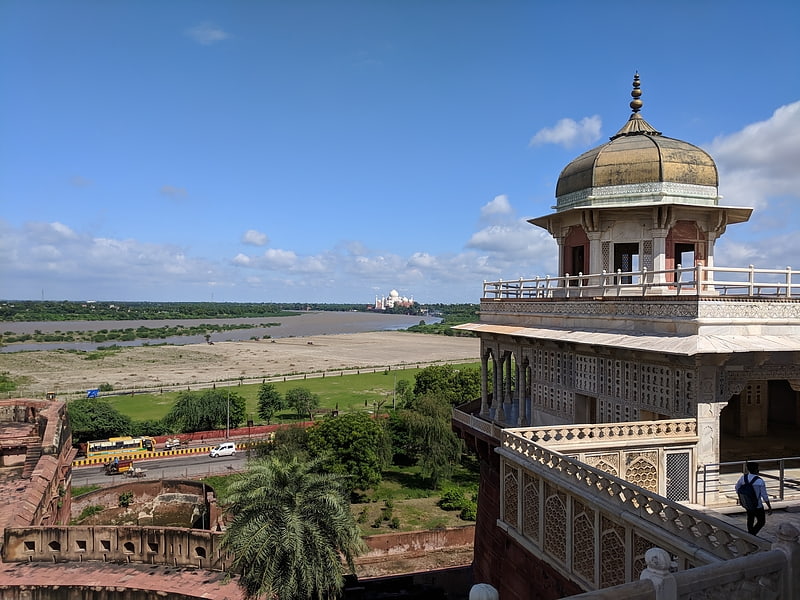
Musamman Burj also known as the Saman Burj or the Shah-burj, is an octagonal tower standing close to the Shah Jahan's private hall Diwan-e-Khas in Agra Fort.[9]
Aram Bagh
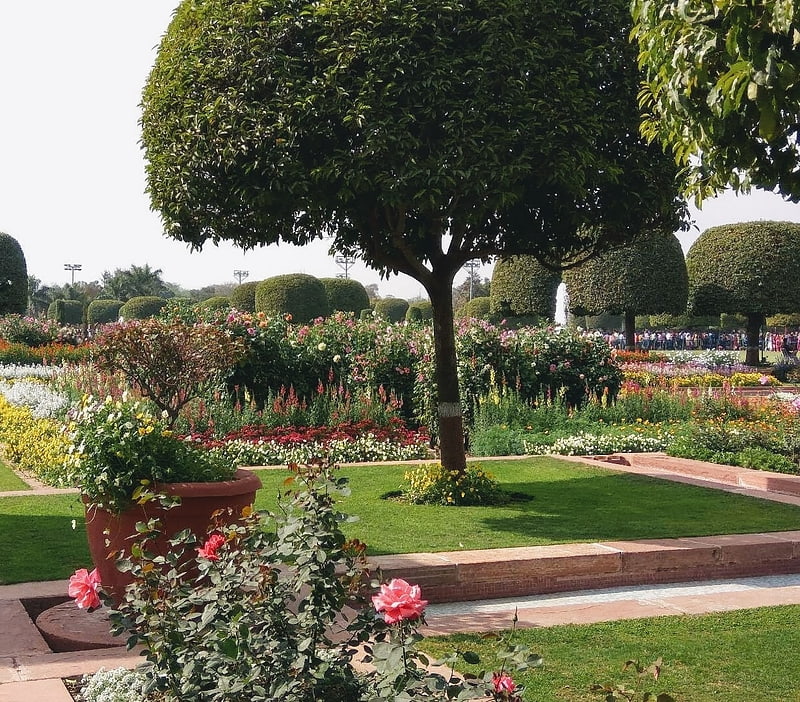
The Aram Bagh is the oldest Mughal Garden in India, originally built by the Mughal Emperor Babur in 1528, located about five kilometers northeast of the Taj Mahal in Agra, India. Babur was temporarily buried there before being interred in Kabul.
The garden is a Persian garden, where pathways and canals divide the garden to represent the Islamic ideal of paradise, an abundant garden through which rivers flow. The Aram Bagh provides an example of a variant of the charbagh in which water cascades down three terraces in a sequence of cascades. Two viewing pavilions face the Jumna river and incorporates a subterranean 'tahkhana' which was used during the hot summers to provide relief for visitors. The garden has numerous water courses and fountains.
The name is a corruption of the Persian Aaram Bagh meaning 'Garden of Rest'. It is also variously known as Bagh-i Nur Afshan 'Light-Scattering Garden', Aalsi Bagh or 'Lazy Garden': according to legend, Emperor Akbar proposed to his third wife, who was a gardener there, by lying idle for 6 days until she agreed to marry him.
Jahangir waited in the garden in early March 1621 for the most astrologically auspicious hour for him to enter Agra after he took the Fort of Kangra. The preserved, surviving architecture dates to his reign and demonstrates the skill of his wife Nur Jahan as a garden designer.[10]
Mankameshwar Temple
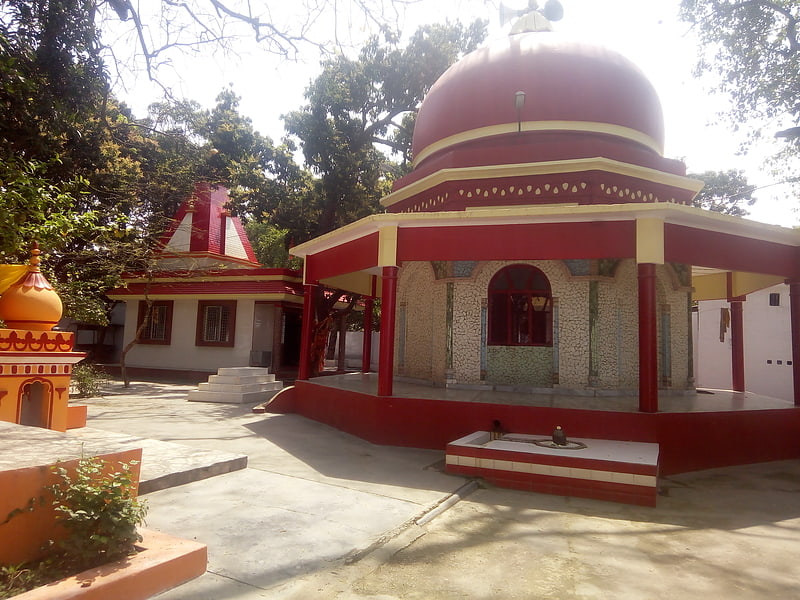
Also known as: मनकामेश्वर महादेव, पीलीभीत
Mankameshwar Temple in Agra is one of the ancient temples devoted to Lord Shiva. The temple is situated at Rawatpara, near Agra Fort Railway Station.[11]
Address: Daresi Rd, 282003 Agra